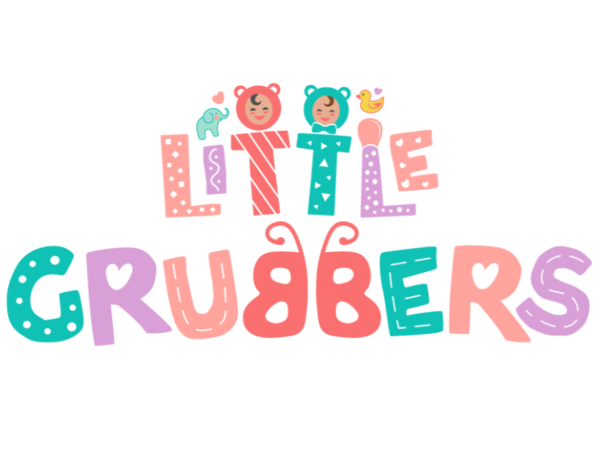A Gentle Guide to Weaning
Weaning off breastfeeding is a big step for both you and your baby. Whether you’re ready to stop breastfeeding completely or just reduce feedings, the process can be emotional and sometimes challenging.
The good news? There’s no “right” way to do it—only what works best for you and your baby. In this guide, we’ll cover the signs your baby is ready, gentle weaning methods, and practical tips to make the transition as smooth as possible.
And if your little one is also starting solids, tools like the Little Grubbers 3-in-1 Baby Spoon™ can make self-feeding easier during this transition.
When Is the Right Time to Wean?
There’s no universal timeline for weaning off breastfeeding—it’s a personal decision that depends on your baby’s readiness and your own circumstances.
Signs Your Baby May Be Ready to Wean
- Less Interest in Nursing: Your baby may become easily distracted or nurse for shorter periods.
- Enjoying Solid Foods: If your baby is eating a variety of solid foods and getting nutrition from other sources, they may naturally reduce breastfeeding.
- Comfort with Other Feeding Methods: Drinking from a cup or bottle without resistance is a sign your baby can handle the transition.
- Sleeping Through the Night: If your baby no longer wakes up for night feedings, it may be easier to cut back on nursing sessions.
If you’re weaning due to work, personal choice, or another reason, that’s okay too! The key is to do it gradually and lovingly to avoid stress for both you and your baby.
How to Wean Off Breastfeeding Smoothly
Weaning should be a gradual process to help your baby adjust emotionally and your body regulate milk supply to prevent discomfort. Here are some gentle weaning strategies to try.
1. Drop One Feeding at a Time
Instead of stopping all at once, eliminate one feeding session every few days. This allows your baby to adjust while preventing engorgement for you.
Best feedings to drop first:
- Midday feedings (these are usually less emotionally significant).
- The ones your baby seems least interested in.
2. Offer Substitutes
If your baby is younger than 12 months, you may need to replace some feedings with formula. If they’re older, solid foods, cow’s milk, or water in a cup can help fill the gap.
💡 Tip: Use a soft, baby-friendly spoon like the Little Grubbers 3-in-1 Baby Spoon™ to encourage independent eating and make the transition from breastfeeding more exciting!

3. Shorten Nursing Sessions
Instead of completely cutting out a feeding, try reducing the time your baby spends nursing. Follow up with a snack or cuddle session to help with the transition.
4. Distract and Redirect
If your baby asks to nurse, offer a different comforting activity, like:
- A favorite snack or drink.
- A walk outside or playtime.
- Extra cuddles and one-on-one time.
5. Adjust Your Routine
If nursing is closely tied to nap or bedtime, try:
- Offering a bottle, cup of milk, or bedtime snack.
- Introducing a new sleep routine (e.g., rocking, storytime).
Night weaning can be one of the toughest parts of stopping breastfeeding, so be patient with your baby as they adjust.
What to Expect During the Weaning Process
Every baby reacts differently to weaning off breastfeeding. Here’s what you might experience:
For Your Baby:
- Some fussiness or clinginess (this is normal!).
- A temporary change in appetite or sleep patterns.
- Increased interest in solid foods or a bottle.
💡 Tip: Continue offering familiar, comforting feeding tools, like the Little Grubbers 3-in-1 Baby Spoon™, to make mealtimes easier during this transition.
For You:
- Mild breast discomfort—reduce engorgement by expressing a little milk if needed.
- Emotional ups and downs (weaning can be a big adjustment for moms, too!).
- Relief or new freedom in your daily routine.
If you experience clogged ducts or mastitis, apply warm compresses and hand express milk to relieve pressure.
FAQs About Weaning Off Breastfeeding
How Long Does It Take to Wean?
It depends! Some babies wean in a few weeks, while others take months. Gradual weaning is best for both you and your baby.
What If My Baby Refuses to Wean?
If your baby resists, slow down the process. Try again later, but keep offering new ways to comfort them without breastfeeding.
Can I Wean Abruptly?
It’s best to avoid stopping suddenly unless medically necessary. Abrupt weaning can cause breast engorgement, clogged ducts, and emotional distress for your baby.
Should I Pump to Maintain My Supply?
If you’re partially weaning and still want to keep some milk supply, you can pump as needed. Otherwise, let your body naturally adjust.
Final Thoughts: Make Weaning a Smooth Transition
Weaning is a journey, and every baby (and mom) experiences it differently. The key is to go at a pace that feels right for both of you. Celebrate small milestones, stay flexible, and offer plenty of love and patience along the way.
💡 Need a little help with the transition to solid foods? The Little Grubbers 3-in-1 Baby Spoon™ makes mealtimes fun and easy—helping your baby gain confidence while self-feeding!
We’d Love to Hear from You!
Have you started the weaning process with your little one? Share your experiences or tips in the comments below—we’d love to support each other on this journey! 💕

